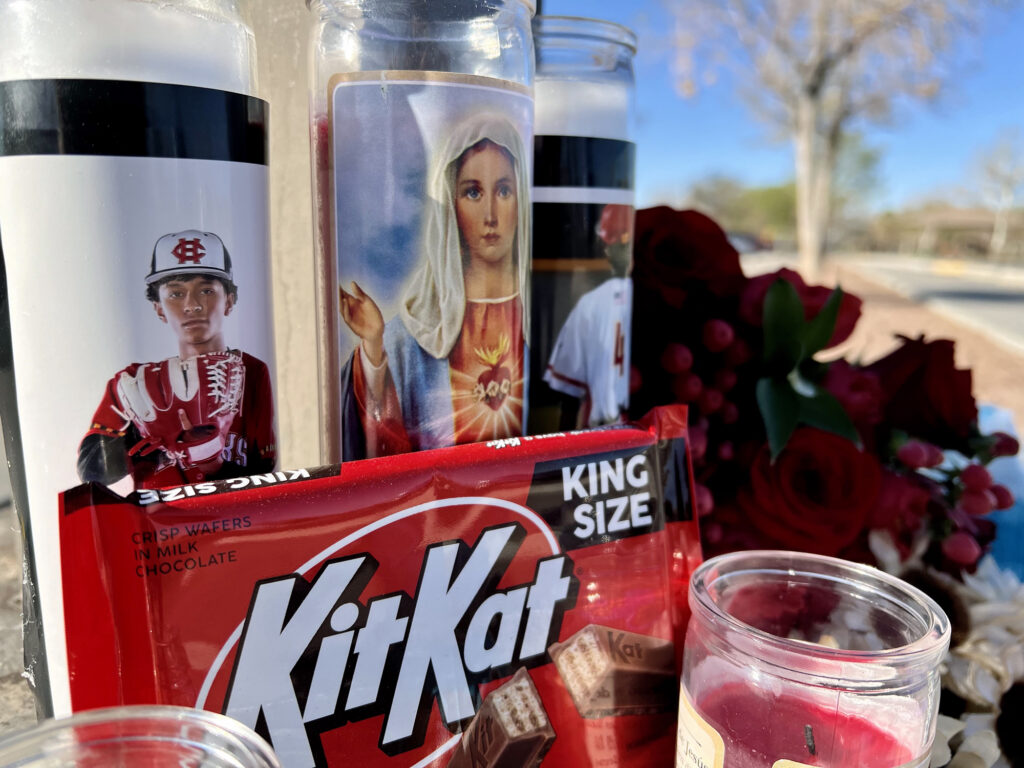
This article contains photographs and descriptions some people might find disturbing.
A Las Cruces police officer stood on the sidewalk outside Lynn Community School while parents dropped off their kids on Monday, watching the scene.
Just up the road, a city work crew raked the gravel in the landscaping between Walnut Street and Young Park, erasing evidence of the scramble to flee gunfire on Friday night.
In the parking lot at the park, which is located west of Interstate 25 in one of the city’s oldest neighborhoods, mourners had placed flowers, candles, balloons and other reminders at three memorials. A Kit Kat for 16-year-old Andrew “A.J.” Madrid. Hennessy at the center of the items left for 19-year-old Dominick Estrada. Paper plates with handwritten notes for 17-year-old Jason Gomez.
A couple visited Gomez’s memorial and wept. A television crew was conducting an interview nearby.
Several people were walking through the park. Two were at the pond fishing.
Across the street, A police officer spoke with a man who appeared to be living out of his vehicle, which was parked next to FedEx Kinko’s.
And further north, at the corner of Walnut Street and Lohman Avenue, an unhoused man sat on the curb next to a shopping cart containing his belongings.
This is the neighborhood in the center of our city where a conflict erupted between two groups of people on Friday. Three died and 15 were injured. Police found 59 bullet casings scattered around the parking lot at Young Park.
Donuts in the parking lot
I realized this park had become a problem last July when my family went there to see the out-of-town act Million Dollar McGraw. The band was playing on stage next to the pond. The crowd was singing along. We were having a great time.
Drivers were doing donuts in the parking lot behind us. The volume of the screeching tires competed with the band. We could smell burning rubber. I looked back and could see smoke after one particularly loud squeal.
Security guards hired to watch over the concert were keeping an eye on the commotion behind us. One looked nervous.
I wondered when police were going to shut down the dangerous driving. A car backfired, and I braced myself for more booms.
Sarah and I discussed the possibility of gunfire and made a plan for where we would seek shelter if necessary.
All of this happened before dark.
After the concert, vehicles were still doing donuts while we made our way to our car at dusk. More people were gathering. There were no cops.
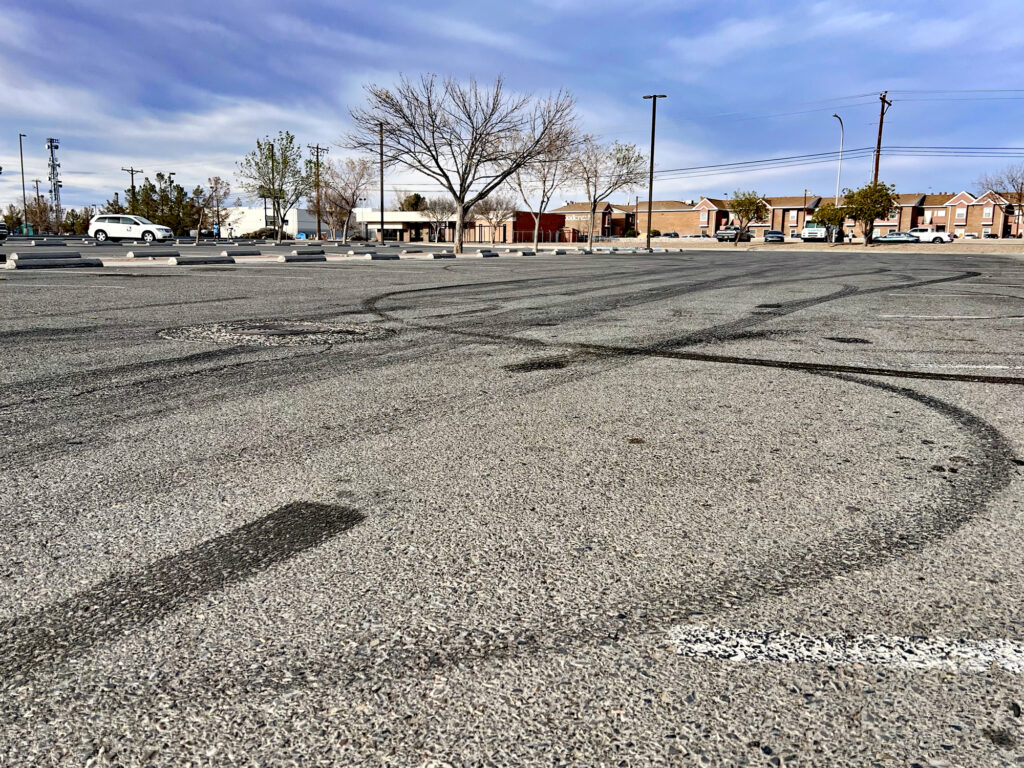
‘Unsanctioned car shows’ and guns
City police knew about problems at the park. Chief Jeremy Story said during a news conference on Saturday that his agency had worked with the city’s Parks and Recreation Department to install gates that lock when the park closes at 11 p.m.
Friday’s shooting happened an hour before the park closed.
At these “unsanctioned car shows,” as Story called them, crowds gather around vehicles that are speeding in circles. It’s a game to see how close you can get to the car without being hit. The drivers are violating traffic laws and the pedestrians are putting their lives at risk.
There appears to be drinking, which is also illegal in a public park.
Fifteen officers showed up to shut down one gathering in 2023, Story said during a second news conference on Tuesday. He showed video of a beer bottle hitting a police cruiser while an officer sat inside. The officer chased down the man who threw it and arrested him.
Before Friday, police were last called to Young Park because of a car show on Feb. 7.
“We’ve been trying to deal with it,” Story said. “…In spite of some of the efforts we are still struggling with that, obviously.”
There are guns, too — or at least there were on Friday. The Albuquerque Journal described the scene just before the shooting: “Hundreds watched as Adrian Núñez, 17, and his friend showed off their cars at Young Park — doing doughnuts and burnouts until the air was thick with tire smoke.
“Then, people in the crowd began pointing guns, fitted with lasers, through the rolling clouds.
“Núñez told the Journal it was surreal watching the bright beams pierce the smoke, knowing a barrel was at the other end.”
Nuñez said he’d seen scenes like that in social media videos from other places, but didn’t expect it “in real life. And I guess I was just kind of like, ‘Oh well, they’re not going to do anything, right?’”
People were walking around in the hours before the shooting carrying guns “willy nilly,” Story said.
Photos and videos posted to social media show two people, who police don’t believe were involved in the shooting, openly carrying an AR-15. A green laser sight and a strobe light installed on the weapon were used for effect in videos. That’s what Nuñez was describing.
There were also at least four handguns at Friday’s event. Four people — one adult and three teens — have been charged with murder thus far. Police aren’t currently ruling out charges against others.
An understaffed police department
On Friday, police received a call about reckless driving at Young Park before the shooting, Story said. The notes in dispatch records say no officer was available to respond, according to the chief.
The Las Cruces Police Department has funding for 220 officers but consistently suffers from 30 or more vacancies. Pay is well below that of the N.M. State Police, an agency that often hires officers away from LCPD.
Police understaffing is a national trend as the jobs become more difficult and less popular. The latter is understandable. Policing in the United States desperately needs reform.
Story said police might have been able to prevent Friday’s shooting “in a perfect world where I had 220 officers like I’m supposed to.”
As it stands, officers are constantly in response mode, moving from crisis to crisis. They’re not getting to know people and neighborhoods. They’re not working to prevent crime.
And as is clear from Young Park, they’re often not able to respond even when crime is happening.
The city has tried to fill its vacancies. It raised pay in October. Officials announced five new hires in February. First-year officers still make $11 per hour less than first-year state police patrol officers, but they also receive bonuses.
The city is soon bringing on board park rangers, unarmed officers who can call for help when needed. And it’s building a real-time crime center that will monitor cameras and other technology to keep up with what’s happening. None of that was in place on the night of the shooting.
But the department needs more officers, Story has said repeatedly. “I’m not going to send a single officer in to deal with something like that, and so I have to have the resources to be able to handle it effectively,” he said Saturday.
Really, if we value community policing — officers being a preventative force instead of a reactive one — we need enough cops to do that. Technology is not a substitute.
In the meantime, Young Park was a lawless zone on Friday night. Three young people died, and 15 others were injured. The park is stained with their blood.
Examining the scene
Police reopened Young Park on Sunday. I visited that afternoon, while organizers were starting to arrive for a vigil that would be attended by 400 people. A few folks were walking around the park. Some were fishing. A television crew was in the parking lot interviewing the district attorney.
I began walking slowly, methodically, just looking.
A shattered vehicle window lay in a pile on the north end of the parking lot. I spotted bloody gauze on the ground against a concrete parking block near the southwest corner of the lot, where the shooting occurred.
I found other signs of the tragedy. A bullet hole in a tree. Black circles on the asphalt where vehicles spun. Places where it appeared blood had pooled.
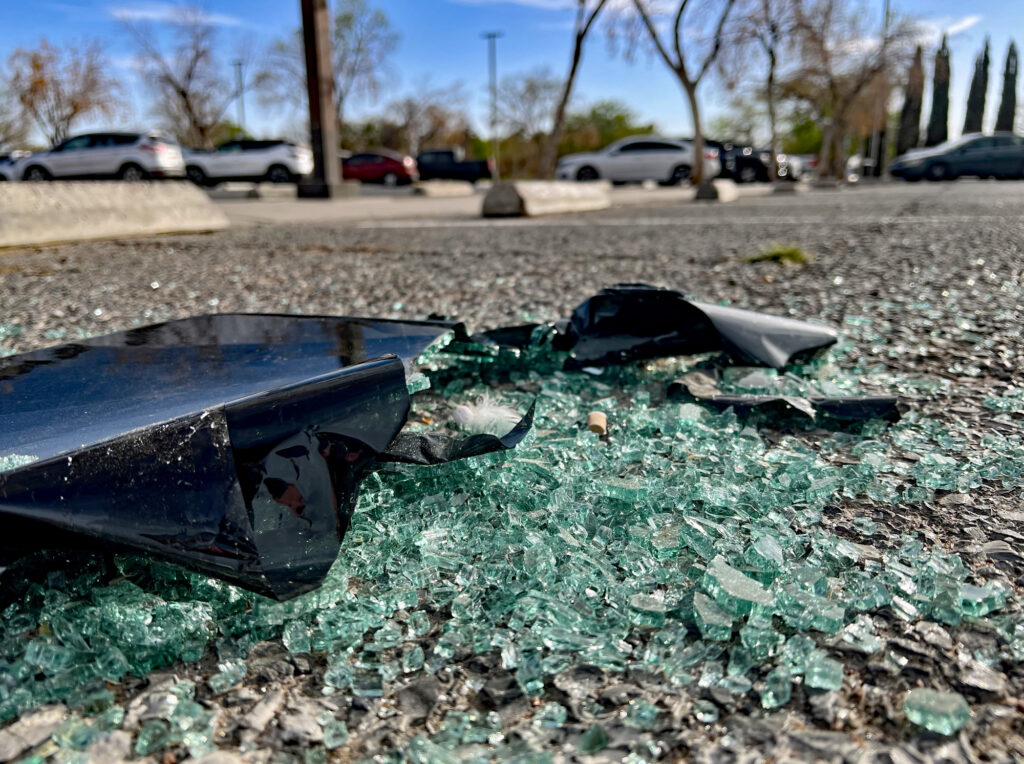
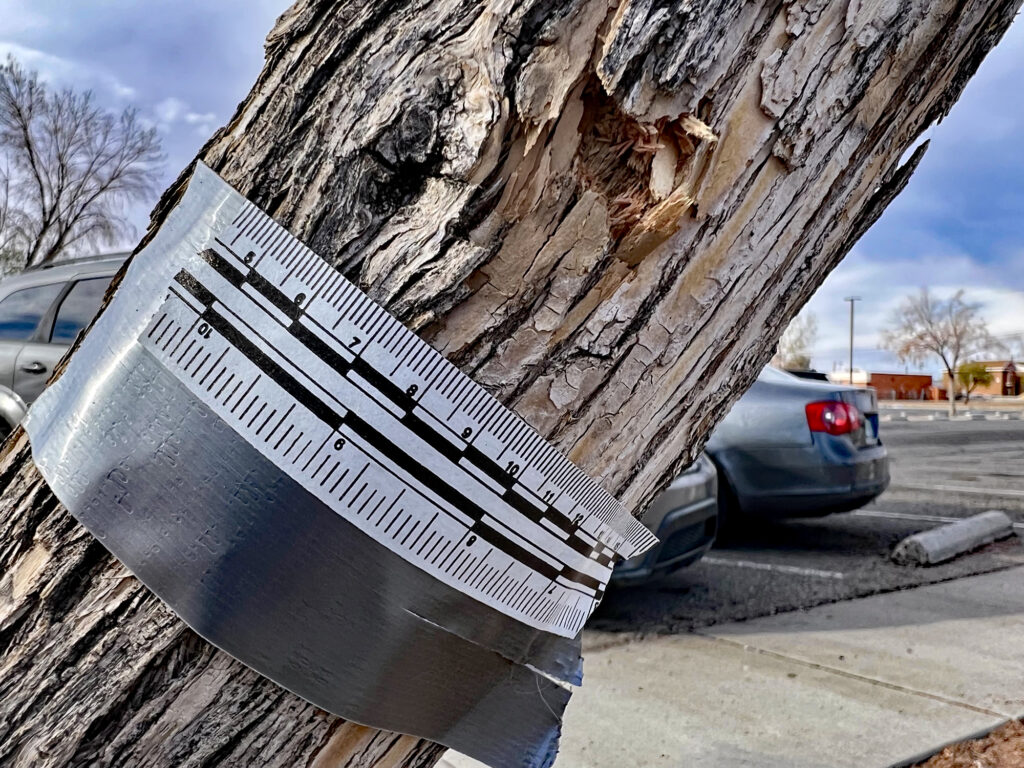
As I walked back and forth across the lot, I saw a shiny piece of brass on the ground. I bent down to find a .22 caliber bullet casing. I took a few photos but didn’t touch it.
I returned to the park in the evening, near dark, because I decided police should know about the casing. A .22 is most commonly used in a rifle that’s designed for hunting small animals like rabbits, though it could also have come from a handgun.
The vigil was beginning to wind down. There were no police present so I called dispatch and requested an officer meet me.
While I was waiting alongside a friend for an officer to arrive, a woman rushed up to us. She told us a man driving a black sedan threatened to start shooting. I looked around to see dozens of people scrambling.
We moved to the edge of the lot and I called 911. While I was speaking with a dispatcher, I backed into a low-lying grassy area.
The scene was frantic. Several cars, including a black sedan whose license plate I couldn’t see, converged on the exit near me. People were honking as they urged those around them to get out of their way.
We made our way across the street to a gas station and stood behind my friend’s vehicle.
People left cases of water behind and candles burning. Only a couple of folks remained when a half dozen police officers arrived.
We walked back to the park and showed the officers the casing. One remarked that it looked old.
Court records later disclosed the calibers used in the shooting, and .22 wasn’t among them. The casing I found has a story, but it doesn’t appear to be part of this one. Police have received calls about shots fired at Young Park in the past.
I went home.
‘The city itself goes on murdering’
I returned a third time Monday morning. That’s when I spotted the police officer at the school next door, the guy living out of his vehicle, and the unhoused man with a shopping cart — a crime the city has recently been working to deter.
Our society is breaking down. So many systems are crumbling. The Trump Administration is dismantling much of the federal government and our safety nets. Our health care system hasn’t bounced back from the pandemic. New Mexico’s behavioral health system has never recovered from then-Gov. Susana Martinez dismantling it in 2013 — though the N.M. Legislature took positive steps this year.
I can’t help but think about this shooting in the context of local news vanishing. Two decades ago it would have been my responsibility at the Las Cruces Sun-News to write an investigative report on problems at Young Park. If I’d done my job well, it would have published long before a shooting like this occurred.
Such coverage might have pressured the city to do more to address the situation proactively.
The local journalists who remain lack the capacity for such a deep dive into a single issue. They’re in response mode, just like the cops.
The rise in mass shootings in recent decades is an inevitable consequence of a society in decline. Systemic problems go unaddressed. More people are forced into desperation.
People’s lives become increasingly expendable.
In his 2010 book Murder City, the late Charles Bowden wrote about the Mexican drug wars that turned Ciudad Juárez into a place that resembled a failed state. He considered what happens when people have to cope with such conditions. He wrote about murders upon murders upon murders.
“No one really pays mind to it anymore because everyone grows numb,” he wrote. “…The missing are no longer counted, and many of the dead remain unidentified, just tossed in those common graves.”
Bowden tied what happened in Juárez to the way our global economy is structured: “I see a future. I see the way things will be here now and the way things will be where you live in good time.”
“I see a city where basic institutions erode and then burn or die, and yet, in the morning my fellow human beings get up, smell the coffee, and continue on with their lives,” he wrote.
Bowden regularly had coffee two blocks from where a prominent Juárez attorney was murdered in broad daylight. He wrote that he hardly ever recalled the attorney’s killing even as he passed the spot where he died.
“This is how we survive,” Bowden wrote. “If we could remember, we would not be able to go on. And if we truly forget, we will have a small patch of bliss until that bullet, and it is possibly already arcing through the air, slams into our skull.”
“But the city itself goes on murdering with or without our memory.”
Remembering
I don’t want to lose my memory. I don’t think Bowden did, either.
Standing in the parking lot at Young Park on Monday morning, I knelt at each of the memorials left behind when folks scattered the night before. There was a photo of Madrid printed on one of the candles. He was a student at Centennial High School.
There were notes left for the other two victims, Estrada and Gomez. “Love you Dom” was written on a candle for Estrada. “I’m gonna miss you” was written on a paper plate for Gomez.
Candles still burned, even while city staffers raked the gravel landscaping.
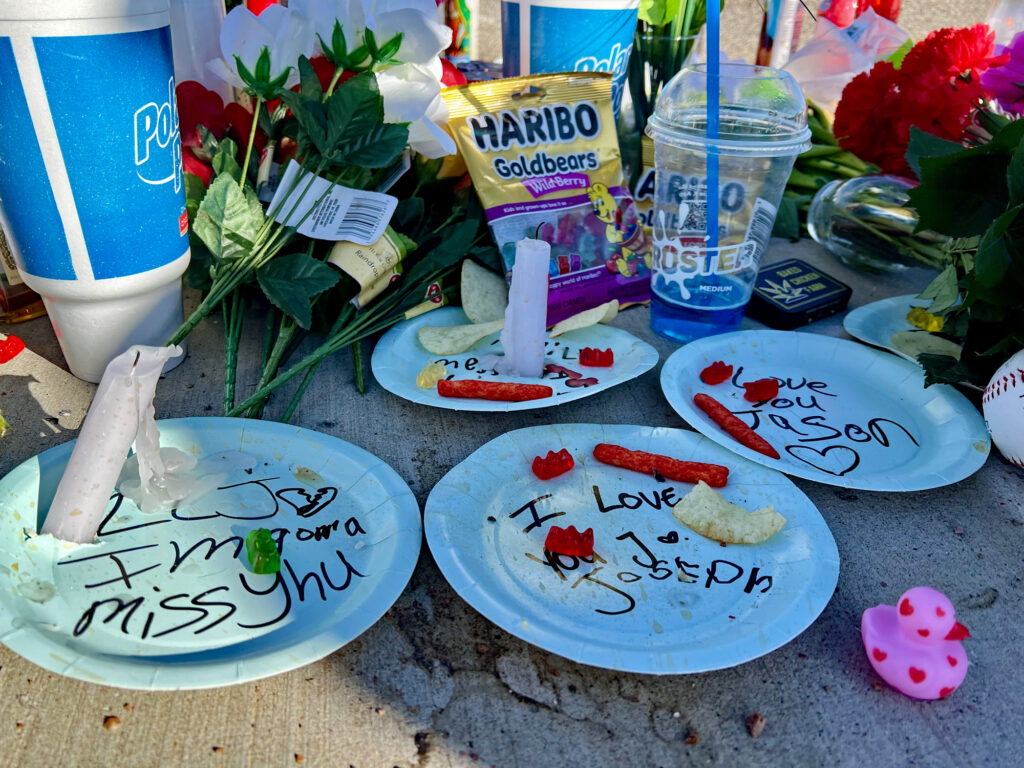
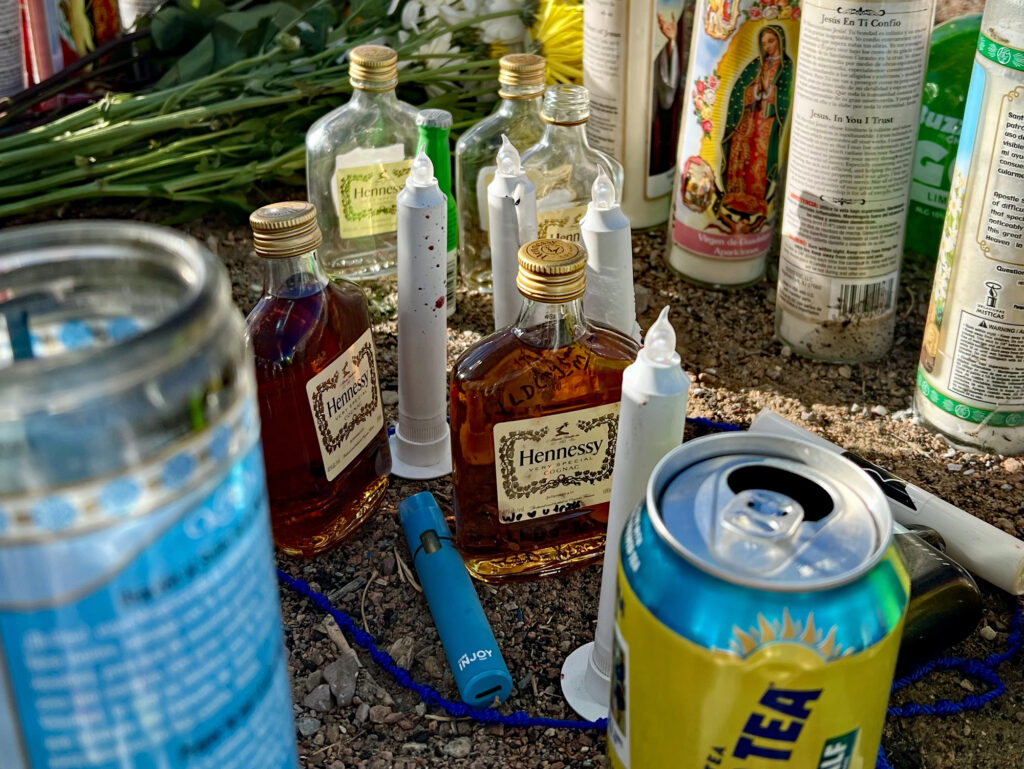
The memorials will eventually come down. Sun, wind and rain will clean the blood from the asphalt. The city will probably hold its annual concert series at Young Park again this summer. We might attend.
And still, I write about the emergency plan we made at the last concert we attended, and about the blood stains on the asphalt and the bullet hole in the tree, so I can remember. I photograph the memorials to sear them into my memory.
I share my writing and photographs as an act of hope: That we’ll come together as a community? We’ll find a better path forward? These young people’s deaths won’t be in vain? Maybe.
At the very least, I hope my work will help others remember, too.
Heath, this is your best writing. It is appreciated!
Thanks.
powerfully evocative work. thanks for the sense of immediacy.
Thanks Heath for your perspective and sharing.
Really good piece, Heath, thanks for providing some missing context on this tragedy.
Thanks for moving beyond the superpredators sterotype and the rush to add more laws which will not be enforced.
Excellent, profound journalism that weaves disparate threads and trends leading to Young Park into a disturbing explanation this New Mexican tragedy’s visible roots. The Juarez thread tells us one possible outcome. Leadership must help us prevent it. Thank you.
Thank you.
A tragedy for our entire community. Your essay touched me as no other description of this event did. Keep on keeping on, Heath.
I appreciate that.
It is so painful that our federal government, WE, spend billions of dollars on nuclear weapons (3x more than Russia, 3x more than China) we say we never plan to use, while REAL NATIONAL SECURITY, diminishes, as you so clearly describe, everyday. I wish for a better world. Your work is so important in helping us maintain the humanity and vision required to get us there. Keep the faith and thank you so much for your efforts.
Thank you for your kind words.
[…] continue to believe the city and state must do more to address crime, which was central to Armstrong’s complaint. I hear this over and over from […]